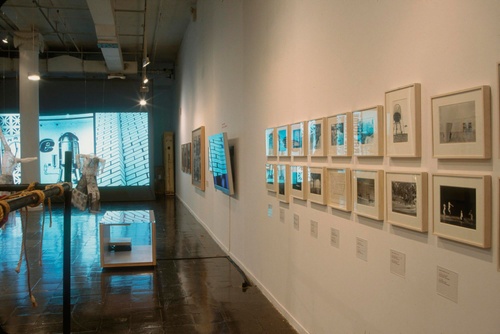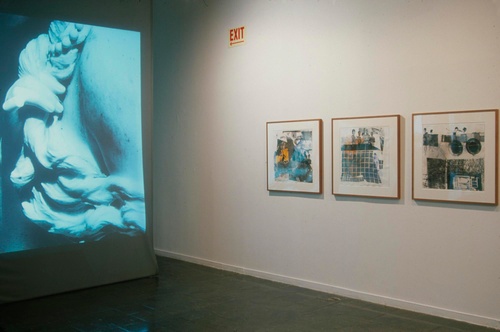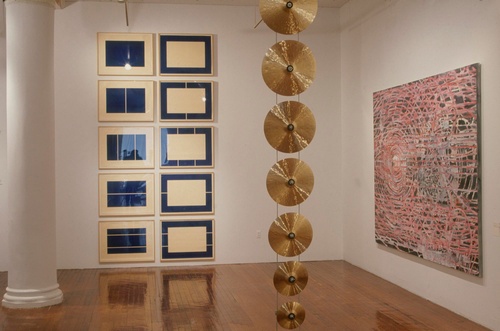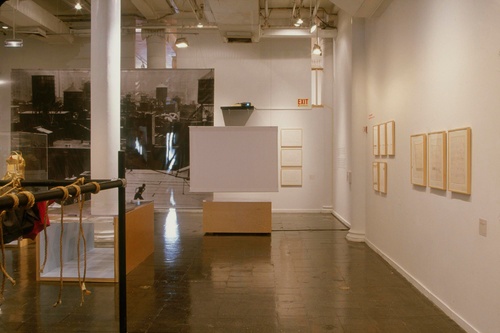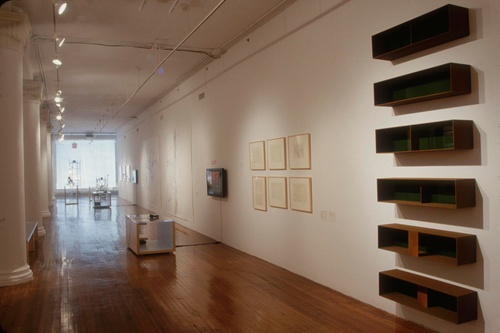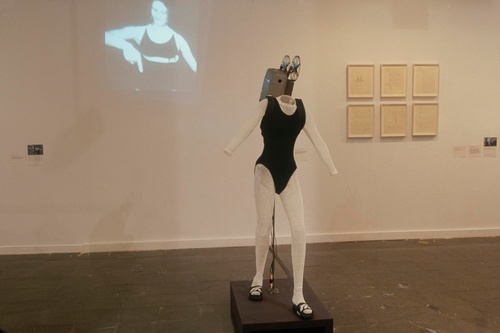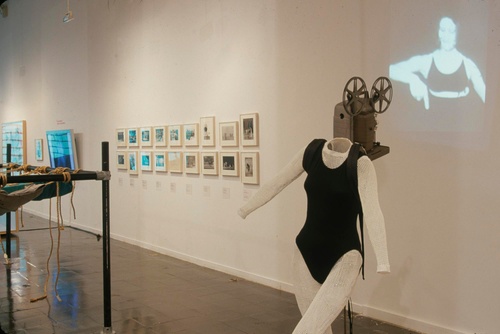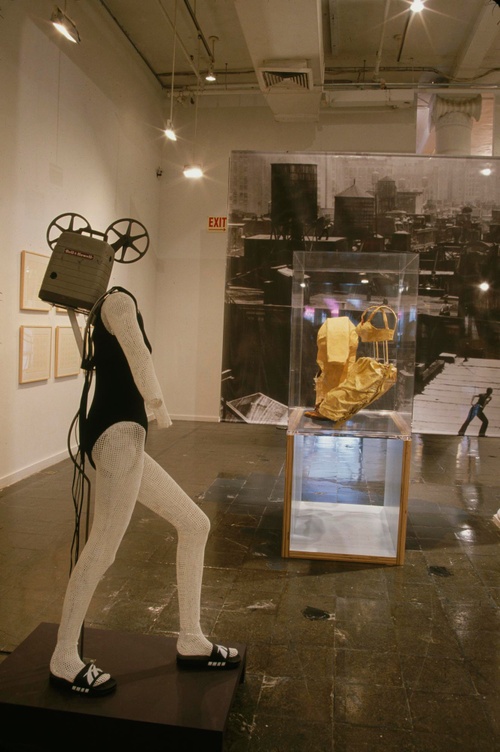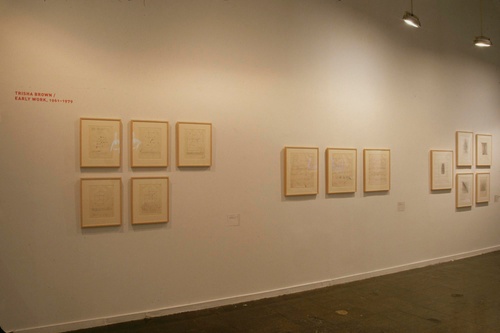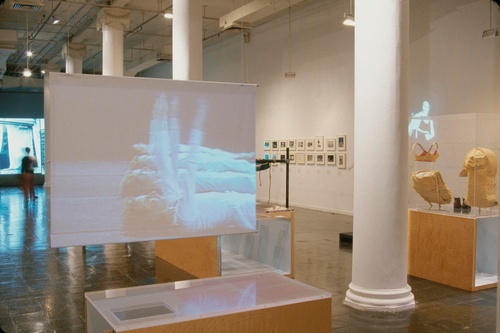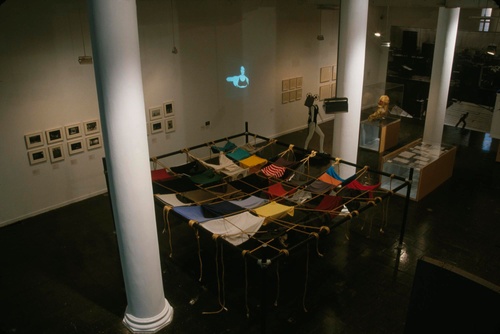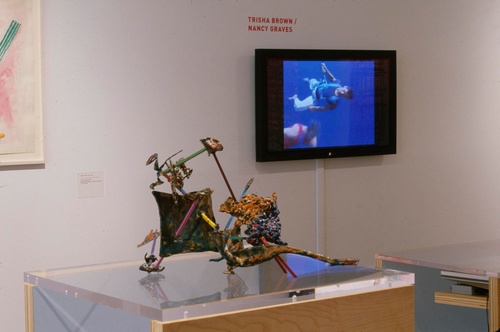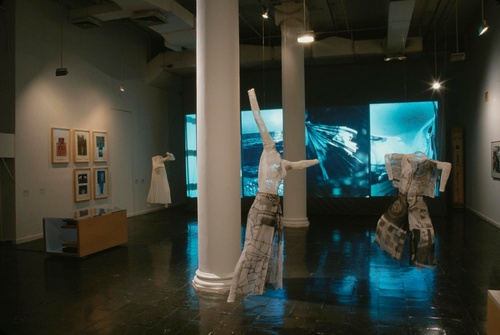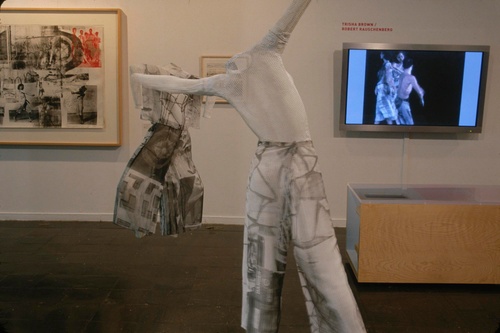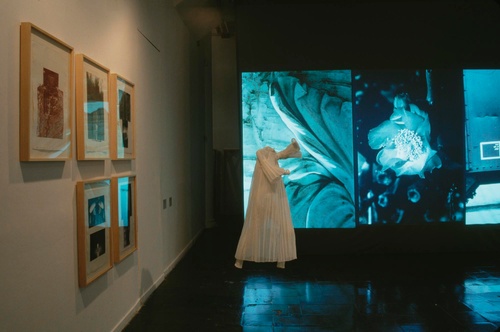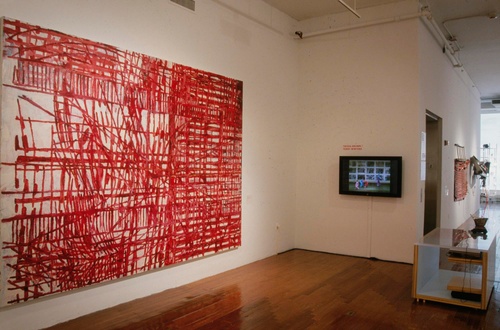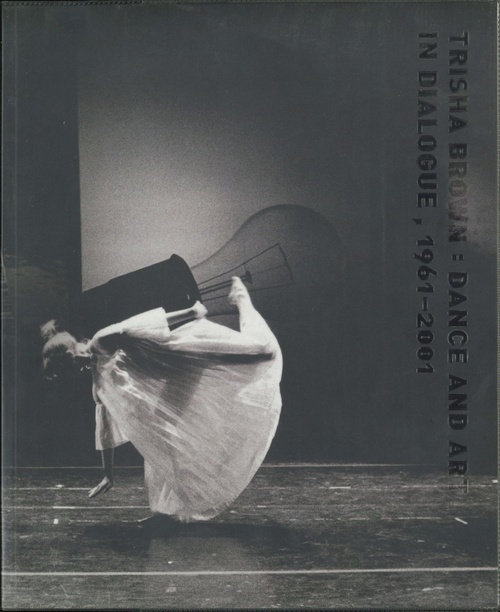Trisha Brown: Dance and Art in Dialogue 1961-2001
Trisha Brown: Dance and Art in Dialogue 1961-2001
It is fitting that an exhibition devoted to choreographer Trisha Brown is presented here in Soho, only blocks from the Judson Memorial Church where she made her 1961 New York debut. It is a homecoming of sorts for a dancer whose early works were performed in such unorthodox spaces as parks, rooftops, churches, streets, galleries, lofts, and museums. Over the past forty years, Brown has transformed the way we think about the body in space, influencing generations of artists working on the dance floor, the stage, the canvas, and the screen. “Trisha Brown: Dance and Art in Dialogue, 1961-2001” explores Brown’s practice as a dancer, choreographer, and artist, as well as her rich collaborations with visual artists Robert Rauschenberg, Fujiko Nakaya, Donald Judd, Nancy Graves, and Terry Winters, and sound artists such as Laurie Anderson, John Cage, and Dave Douglas. These partnerships challenged both parties to expand their ideas about their own work, and the results are as varied in tone as Brown’s dance vocabulary, ranging from minimal to baroque, from cool to steamy. This exhibition, which encompasses films, still photography, sound, and live performances, gives us the opportunity to engage with Brown’s multimedia adventures in real time.
Collaboration for Brown is a kind of alchemy that merges her ideas about choreography with those of the artists working on sets and costumes. With Robert Rauschenberg, a longtime collaborator and friend, this meant blurring the boundaries between found objects and sculpture, between everyday movement and dance: the act of walking becomes dance; the presentation of discarded sinks and window blinds becomes a makeshift set for Lateral Pass. In Glacial Decoy (1979), Rauschenberg’s moving black-and-white projected images parallel and emphasize the movements of the five dancers who shift back and forth behind the proscenium arch suggesting there is an infinite line of dancers never revealed beyond the frame. Brown’s exploration of visibility and invisibility in Set and Reset (1983) is highlighted by Rauschenberg’s semi-transparent set and costumes, which offer views of dancers’ bodies both on- and offstage. Always working against tradition, Rauschenberg was the one who suggested that Brown turn her back to the audience for her first solo piece in fifteen years, If You Couldn’t See Me (1994).
It seems appropriate that Brown, in her quest to explore the fundamental aspects of movement, would gravitate toward the work of minimalist sculptor Donald Judd. Both have an interest in defining space through seriality and repetition as well as in distilling objects and movements down to their essentials. Just as Brown often imposed limits on the movements employed to create a dance, Judd challenged his creativity by limiting himself to prefabricated materials and specific geometric shapes. Sharing the choreographer’s traditional control of space and time with Judd’s powerful set in Newark (Niweweorce) (1987), the continuously moving upstage panels of saturated color define the depth of the stage and the dancers’ space as well as the audience’s view of the movement.
Brown’s love of structure and her interest in abstract forms led her to other collaborations. For Lateral Pass (1985), Brown enlisted her friend Nancy Graves, a painter, printmaker, filmmaker, and sculptor who drew inspiration from anatomy, anthropology, psychology, and perception in her abstract works. Lateral Pass stems from Brown’s memories of running as a child through the woods, maintaining speed and balance by carefully placing her feet on the forest floor. The dance reintroduces Brown’s early experiments with flying and racing footwork while testing the dancers’ physical limits and is part of the Valiant cycle, one of the six groupings Brown has created to guide the understanding of her works. Expressing an exuberance that complements the dance itself, Graves’s “land forms”-huge bronze-colored sculptures-are choreographed to move and interact with the brightly adorned dancers.
Fujiko Nakaya, a sculptor who deals exclusively with fog, re-created the atmospheric landscape of Brown’s Washington State childhood for Opal Loop/Cloud Installation #72503 (1980). A stunning work, Opal Loop introduces a variety of now-classic Brown phrases and serves as a personal achievement for Nakaya, who had never manipulated fog indoors but was asked to create a rolling fog that did not condense on the floor and impede the dancers’ movements. The use of fog, an ultimately unpredictable medium that can be guided with the aid of technology, perfectly complements a choreography that is part of Brown’s Unstable Molecular Structures cycle, which she describes as movements “about words that begin with ‘S’: sexy, sequential, seamless, silky, sensual.”
Brown found the expression of a kindred spirit in Terry Winters’s abstract representations of movements both in the actual and virtual world. Their collaboration, El Trilogy (1999-2000), explores improvisation, musical structure, weather patterns, and the usually unseen set changes during the interludes that are revealed to the audience. In El Trilogy-a dance composed of three choreographies and two solo interludes-Brown’s choreography shifts between improvisation and structure like Dave Douglas’s jazz score. For the bookends of the piece, Five Part Weather Invention and Groove and Countermove, Winters designed boldly graphic sets evocative of musical notations loosened from their mooring on a page of sheet music; the set’s swooping, swirling lines accentuate the dancers’ movements. The central section, Rapture to Leon James, presents the dancers, dressed in 1930s social-dance style, improvising call-and-response Lindy moves amidst a stack of cymbals and a succession of spaces illuminated with colored lights. Brown and Winters share an interest in movement across a plane, be it a dance floor or a canvas. For more than four decades, Brown and her artistic partners have “merged two dreams into one.” Their pioneering multimedia performances expand our perceptions of dance, art, and our own movement through the world. Her earliest work challenged the limits of modern dance by stripping away its excesses and creating new vocabularies. In returning to the more traditional musical scores and operas eschewed in her youth, Brown reinterprets the conventions of these disciplines while offering us new ways of connecting them with our contemporary experiences.

